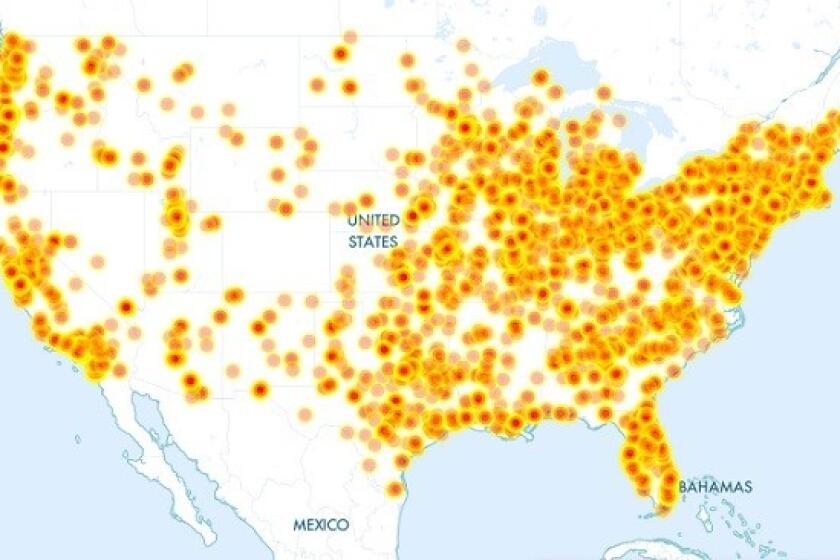watchdog: Inside the Boy Scouts’ ‘Perversion Files’
Los Angeles Times reporters spent a year delving into confidential files on suspected sexual abusers — files that had been locked away for decades by the Boy Scouts of America. What follows is a series of groundbreaking stories on the files, along with the most comprehensive database of the cases ever published, including 1,900 files and 3,100 case summaries spanning 1947 through 2005. Explore the database and map: Tracking decades of allegations in the Boy Scouts
- 1
Records emerging on decades-old cases point to the group’s former lax handling of molestation incidents.
- 2
Los Angeles Times review of Boy Scout documents shows that a blacklist meant to protect boys from sexual predators too often failed in its mission.
- 3
Despite lapses, the files indicate that the top officials may have followed policy and violated no laws.
- 4
Organization often played legal hardball against accusers in molestation cases, say attorneys and families.
- 5
Memories of spending the night at Rodger L. Beatty’s home in Pennsylvania are still fresh. Five boys reported their leader’s actions to Scout officials and he was expelled, but the police weren’t called.
- 6
Law enforcement will be informed of any previously undisclosed cases, the organization says. A Times investigation found Scouting did not report hundreds of cases of alleged abuse.
- 7
Viewable online: about 1,200 previously unpublished files kept by the Boy Scouts of America on volunteers and employees expelled for suspected sexual abuse.
- 8
A Santa Barbara judge had told the Boy Scouts to turn over two decades of confidential files on alleged sexual abuse. The Scouts say they’ll appeal to the California Supreme Court.
- 9
Boy Scouts of America fought the trend of adopting criminal background checks for volunteers and staff, unknowingly allowing convicted child sex offenders to join.
- 10
Reports cover more than 1,200 suspected molesters from the 1960s through 1985, naming doctors, lawyers, politicians and police officers.
- 11
Dozens of men contact the L.A. Times to describe how events detailed in the long-hidden documents shaped their lives.
- 12
The Boy Scouts expelled Dr. Thomas Kowalski in 1987 and reported him to authorities, but the two victims did not press criminal charges. He continued to work with children.
- 13
Statutes of limitation vary by state, allowing some alleged victims to win damages, while others have no recourse.
- 14
There is no single predator profile, but analysis of confidential files shows ‘grooming behavior,’ a gradual seduction. For years, Scout officials ignored the advice of experts to study the files.
- 15
When volunteers and employees were suspected of sexually abusing children, Boy Scout officials often didn’t tell police, files from 1970-91 reveal. In many cases they sought to hide the situation.

